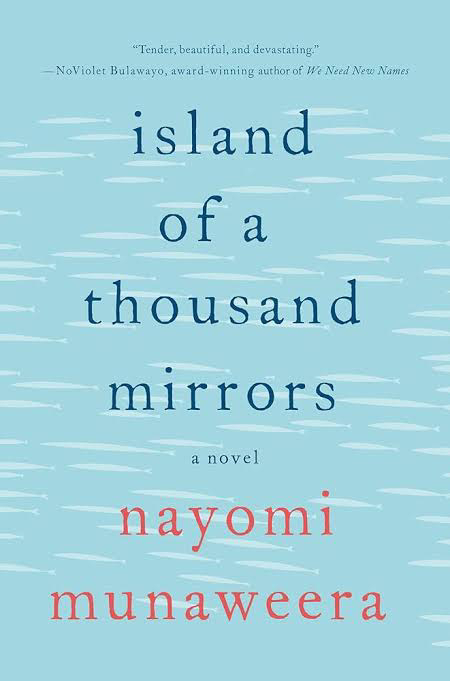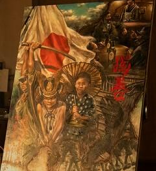WORKSHEET 1&2| AN ARTIST OF THE FLOATING WORLD
This blog is part of the Thinking activity task of the worksheet of The Artist of the Floating World.
Note : The purpose of doing a worksheet is to contribute to a deeper understanding of the novel and its thematic complexities. That means answers generated by AI, like this blog, are written with the help of resources such as Gemini, ChatGPT, Claude, or Copilot, to assist in answering questions or generating ideas as needed. Students are learning here to work with these resources to make their learning more effective.
Worksheet-1 Worksheet-1.1 Author & title
Match the following:
Match the following items related to Kazuo Ishiguro with their descriptions.
Items Descriptions
Sir Kazuo Ishiguro : British novelist of Japanese origin, born in Nagasaki, Japan.
Novelist known for : his lyrical tales of regret fused with subtle optimism.
Regret fused with subtle optimism : A narrative style that deals with memories and nostalgia of the past, often leading to regret for one's past deeds.
The Nobel Committee remarked : Uncovering the abyss beneath our illusory sense of connection with the world.
1). Who is V S Naipaul, and what is he known for ?
V. S. Naipaul, born in Trinidad in 1932 to Indian heritage and passed away in London in 2018, was a writer known for his bleak novels set in developing nations. He also wrote several non-fiction works, including books focusing on India and Islamic societies.
2).What is the book "Good Muslim" about? Also mention the author & country.
"The Good Muslim" by Tahmima Anam is a follow-up to her first novel "A Golden Age," covering the period from 1984 to 1985, with intermittent references to the aftermath of the Bangladesh Liberation War in 1971. It delves into the themes of faith and family amidst the backdrop of war.
3). What is "The Lowland" about?
The Lowland is a tale of Udayan and Subhash Mitra who are born just fifteen months apart, but possess starkly different personalities and they encounter futures that are poles apart.The Lowland is the second novel by American author Jhumpa Lahiri, published by Alfred A. Knopf and Random House in 2013.
4). Who is the author of ‘Island of Thousand Mirrors and to which country does s/he belongs to?
Nayomi Munaweera is a Sri Lankan American writer and author of Island of a Thousand Mirrors, which won Commonwealth Book Prize for the Asian Region in 2013, and What Lies Between Us (2016), which won the Sri Lankan National Book Award for best English novel and the Godage Award.
5). Explain the significance of the title of the novel ‘An Artist of the Floating World’ in a few words:
The title also alludes to a style of art. Ono's mentor is particularly focused on portraying scenes from the entertainment district near the villa where they reside. Ono highlights the fleeting essence of the transient world that comes alive each night.
Worksheet-2 | An Artist of the Floating World
1. Explain these quotes: Write context and significance on separate paper.
(A) “As far as I am concerned, I freely admit I made many mistakes. I accept that much of what I did was ultimately harmful to our nation, that mine was part of an influence that resulted in untold suffering for our own people. I admit this.” Speaker: ______________________ to: _______________________.
Masuji Ono to Saito Family
(B) "There's a certain kind of artist these days," he went on, "whose greatest talent lies in hiding away from the real world. Unfortunately, such artists appear to be in dominance at present, and you, Ono, have come under the sway of one of them. Don't look so angry, it's true. Your knowledge of the world is like a child's. I doubt, for instance, if you could even tell me who Karl Marx was."
Speaker: to:
Mastuda to Masuji Ono
(C) "Was Mr Naguchi like Oji?" --- Oji, why did Mr Naguchi kill himself?". Speaker: _______ to ______. (D) “My conscience, Sensei, tells me I cannot remain forever an artist of the floating world." --- Then he said: "As you point out yourself, Ono, these are troubled times. All the more so for a young artist, practically unknown.” Speaker: _______________________ to ________________.
Ichiro to Masuji Ono
2. Explain this painting: [Keywords to search about it in novel – ‘Complacency’, ‘Eyes to the Horizon’.]
This painting shows a skeleton wrapped in red cloth at the center, representing how fragile life is. It looks like the skeleton is calling out to the viewer with its bony fingers and intense gaze. Around it are lots of plants and flowers, showing how life and death coexist in nature.
The title "Complacency" and "Eyes to the Horizon" suggest a warning about getting too comfortable and forgetting your goals. The lush scenery might symbolize how easy it is to lose sight of your dreams. But the skeleton reminds us to stay focused and not lose track of what's important.
Basically, this painting makes you think about big ideas like life's shortness, the danger of getting too comfortable, and why it's important to stay focused on your goals. Its powerful imagery and deep meaning make you think long after you've seen it.
4). What do you understand about ‘Unreliable Narrator’ ?
An unreliable narrator is a narrative technique where the narrator's credibility or trustworthiness is compromised, either intentionally or unintentionally, leading the reader to question the accuracy or truthfulness of the story being told. Unreliable narrators can distort facts, misinterpret events, or manipulate the reader's perception, often to serve a specific narrative purpose or to explore themes related to perspective, subjectivity, and the nature of truth.
Nick Carraway in F. Scott Fitzgerald's "The Great Gatsby"
Humbert Humbert in Vladimir Nabokov's "Lolita"
Edgar Allan Poe's Narrators in various short stories
Masuji Ono in "An Artist of the Floating World" is an unreliable narrator due to his subjective interpretation of events, selective memory, and tendency to rationalize his past actions. He presents himself in a favorable light, downplaying his role in propagating nationalist propaganda during WWII and omitting details that contradict his self-image. Readers are prompted to question the accuracy of his narrative and consider alternative perspectives, contributing to the exploration of themes like memory and identity.
5). The Art and the Artist: How is this concept explored in the novel? [Key: How Masuji’s father, Master Takeda - a business owner, Chisu Mastuda – a nationalist friend and Seiji Muriyama - teacher consider the role of art? Mention it in a few words. Do not write lengthy answer]
Masuji's father sees art as honorable but not a reliable way to make a living. Master Takeda thinks traditional Japanese art is valuable but thinks it's more important to be practical than to pursue artistic dreams. Chisu Matsuda believes art should support nationalistic ideas and bring people together, suggesting artists should follow the government's lead.
Seiji Muriyama, Masuji's old teacher, thinks art should question the status quo and make people think. He encourages Masuji to challenge conventions and try new ways of expressing himself.
6). Which theme according to you is the central theme of the novel? [Just mention the theme. No need to write in detail about it]
The central theme of the novel "An Artist of the Floating World" is the reconciliation of the past with the present.









Comments
Post a Comment